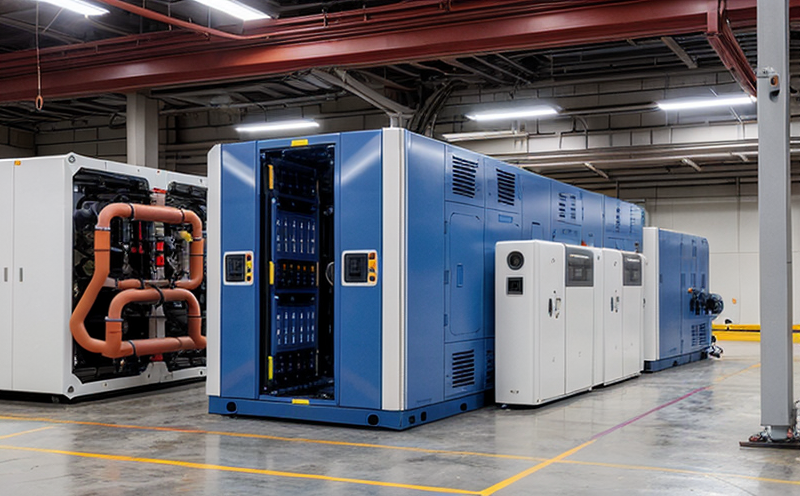Subsystem Integration Testing
The Power of Subsystem Integration Testing Unlocking Efficiency and Reliability in Your Business
In todays fast-paced business landscape, companies are constantly striving to improve efficiency, reduce costs, and enhance product reliability. One critical component of achieving these goals is through rigorous testing and validation processes. Among these, subsystem integration testing stands out as a vital service that can make all the difference between success and failure.
At Eurolab, we specialize in providing top-notch laboratory services, including Subsystem Integration Testing. Our expert technicians use cutting-edge equipment and proven methodologies to ensure seamless integration of complex systems, helping businesses like yours achieve unprecedented levels of efficiency and reliability.
What is Subsystem Integration Testing?
Subsystem integration testing involves the comprehensive evaluation of multiple components or subsystems that work together to form a larger system. This type of testing focuses on how each individual component interacts with others, ensuring smooth communication, data exchange, and overall system functionality.
In essence, subsystem integration testing is about verifying that all parts of a system are working in harmony, without compromising performance or reliability. By identifying potential issues early on, companies can avoid costly rework, reduce downtime, and improve overall product quality.
Why is Subsystem Integration Testing Essential for Businesses?
The advantages of using subsystem integration testing are numerous, and they can have a direct impact on your companys bottom line. Here are some key benefits
Improved Efficiency By identifying and addressing issues at the component level, businesses can streamline their manufacturing processes, reduce production time, and increase overall efficiency.
Enhanced Reliability Subsystem integration testing helps ensure that complex systems operate flawlessly, minimizing the risk of equipment failure, downtime, and associated costs.
Cost Savings Detecting and resolving problems early on saves companies from costly rework, repairs, and replacements. This can lead to significant savings in resources, materials, and labor.
Compliance with Regulatory Requirements Many industries are subject to strict regulations regarding product safety and quality. Subsystem integration testing helps companies meet these requirements, reducing the risk of non-compliance fines and reputational damage.
Competitive Advantage Companies that prioritize subsystem integration testing demonstrate their commitment to quality, reliability, and efficiency. This can give them a significant edge over competitors in terms of customer satisfaction, loyalty, and market share.
Key Benefits of Subsystem Integration Testing
Here are some additional benefits of using subsystem integration testing
Reduced Risk of Equipment Failure By identifying potential issues early on, companies can reduce the risk of equipment failure, downtime, and associated costs.
Increased Productivity With a reliable and efficient system in place, businesses can increase productivity, meet customer demands, and stay ahead of competition.
Improved Customer Satisfaction Subsystem integration testing helps ensure that products are safe, reliable, and perform as expected. This leads to increased customer satisfaction, loyalty, and positive word-of-mouth.
Compliance with Industry Standards Eurolabs expert technicians use industry-recognized standards and methodologies to ensure that subsystem integration testing meets or exceeds regulatory requirements.
QA Frequently Asked Questions about Subsystem Integration Testing
Q What types of systems can be tested using subsystem integration testing?
A Our expert technicians at Eurolab specialize in testing a wide range of complex systems, including but not limited to
Aerospace and defense
Automotive
Industrial automation
Medical devices
Renewable energy
Q How does subsystem integration testing differ from unit testing or system testing?
A Subsystem integration testing focuses on the interaction between individual components or subsystems, whereas unit testing evaluates the functionality of each component in isolation. System testing, on the other hand, examines the overall performance and functionality of the entire system.
Q What are the typical steps involved in a subsystem integration testing project?
A Our comprehensive approach includes
Project planning and scope definition
Component or subsystem selection and preparation
Test setup and configuration
Testing and data collection
Analysis and reporting of results
Q Can I outsource my subsystem integration testing needs to Eurolab, or do I need in-house personnel?
A Both options are available! Our experienced technicians can work on-site at your facility, or you can send your components or subsystems to our state-of-the-art laboratory for testing. We also offer customized training and support programs to help your team develop in-house expertise.
Conclusion
In todays business environment, companies that invest in subsystem integration testing reap significant benefits in terms of efficiency, reliability, cost savings, compliance, and competitive advantage. At Eurolab, we are committed to providing top-notch laboratory services, including Subsystem Integration Testing, to help businesses like yours achieve unparalleled levels of success.
Dont wait until its too late take the first step towards ensuring the reliability and performance of your complex systems by contacting us today!




